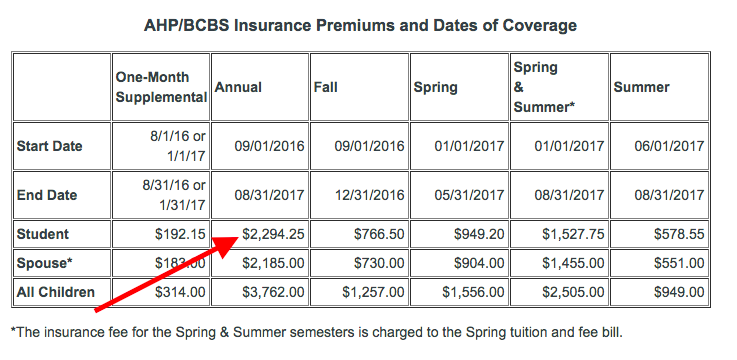However there are other types of permanent life policies that can supply http://louisulkq988.simplesite.com/452128237 long-lasting insurance coverage. These policies work really differently from traditional whole life insurance and include: Universal life insurance coverage. Variable life insurance. Survivorship life insurance coverage. Part of the premium payments for whole life insurance will build up in a money value account, which grows over time and can be accessed.
However, if you secure money worth that includes investment gains, through a policy withdrawal or loan, that part will be taxable. The build-up of cash value is the major differentiator between entire life and term life insurance coverage. While real development varies from policy to policy, some take decades prior to the collected cash worth goes beyond the amount of premiums paid.
The rest goes to spending for the insurance coverage itself and expense charges. Most entire life policies have a guaranteed return rate at a low percentage, but it's difficult to understand just how much your cash value will actually grow. That's because many insurance coverage companies that offer whole life also offer a "non-guaranteed" return rate of return based on dividends.

In my experience, having actually reviewed a number of dozen policies, timeshare after death guaranteed rates of return are typically 1% to 2%, with non-guaranteed rates at about 4% to 6% annually. In one policy I just recently assessed, it would take 35 years, according to the ensured rate projections, for the policyholder's money worth to surpass what she had paid in premiums (what is the difference between whole life and term life insurance).
The 5-Minute Rule for How To Check If Your Health Insurance Is Active Online
It's uncertain what percentage of insurance policy holders get returns closer to the "non-guaranteed" rates. You can tap into cash worth with a withdrawal or a loan. If you take a loan, it's tax-free, donate timeshare to charity and you can pay it back, with interest. If you make a withdrawal, there are no taxes as long as your withdrawal is less than the portion of your cash value that's attributable to premiums you have actually paid.
Impressive loans and withdrawals will both reduce the quantity of survivor benefit paid if you pass away. That's not always a bad thing. After all, one of the factors to buy an entire life insurance policy is to get cash value, so why let the cash sit there without ever using it? While the cash worth is there, you want to make sure that you understand all the implications of accessing it prior to making any decisions.
You don't need to divide the payout similarly amongst recipients. You can designate the portion for each, such as 75% to Mary and 25% to John. It's likewise a great idea to likewise designate one or more contingent recipients. These folks resemble your backup strategy in case all the primary recipients are deceased when you die.
The life insurance company is contractually obligated to pay the beneficiaries named on the policy, regardless of what your will says. It's a good idea to check when a year to verify your beneficiaries still reflect your desires. A major selling point of entire life insurance coverage is that it will be in force until your death, unlike term life insurance coverage.
Excitement About What Is Policy Number On Insurance Card
But here's a kicker: For many policies, the policy pays only the survivor benefit, no matter just how much cash worth you have actually collected. At your death, the money value reverts to the insurer. And remember that impressive loans and previous withdrawals from cash value will reduce the payment to your beneficiaries.

This arrangement also means you'll pay greater yearly premiums, as the insurance provider is on the hook for a bigger payment. While a few of the money value features and the permanent nature of entire life insurance coverage sound enticing, for many people, entire life insurance coverage is merely unaffordable. Numerous life insurance coverage consumers take a look at term life vs.
It's never ever an apples-to-apples contrast since the policies are so various. how do i get health insurance. That stated, we found that a $500,000 40-year term life policy from Legal & General (the longest term life policy currently available) would cost about $700 a year for a healthy 30-year-old male. A $500,000 whole life policy from American National would cost about $4,060 or 5.
Rate differentials will vary according to age and protection quantity. This cost differential makes entire life far less attractive to the majority of people with an insurance requirement. The coverage amount you select will help determine your rate, in addition to: Age and gender Height and weight Past and current health conditions The health history of your moms and dads and brother or sisters Nicotine and marijuana use, including nicotine spots and gum Compound abuse Credit Criminal history Driving record (specifically DUI convictions and moving violations such as speeding tickets) Unsafe pastimes and activities (such as piloting airplanes or rock climbing For whole life, there are a range of other features and provisions that can impact expenses as well, such as:: You can select to pay for the whole policy in a brief time frame, such as 10 or 20 years.
Little Known Questions About What Does Full Coverage Car Insurance Consist Of.
: Some business offer a greater guaranteed return, which can result in higher yearly premiums.: Numerous entire life policies pay a dividend, and policyholders can pick how to get it. Receiving your dividend payments as a credit toward premiums minimizes your annual out of pocket expense. With term life insurance coverage, if you no longer have a need for insurance, you can just stop paying.
With whole life, it's not that basic. If you stop paying, the cash value will be used to pay any premiums till the money worth goes out and the policy lapses. But there are options to simply stopping payments. Alternatives differ depending on your strategy however may include: You can simply request the cash surrender worth to be paid to you.
This action ends the insurance plan, so you need to only do this if you no longer have a need for insurance coverage, or have new insurance coverage in place. By taking the surrender value, you'll need to pay earnings taxes on any investment gains that became part of the money worth. The business takes what you have actually already paid in, determines how big of a survivor benefit that would permanently offer, and provides you a policy with the lower death benefit amount.
The business takes wahat you've already paid and transforms your policy into a term life policy for the very same survivor benefit. How long the policy lasts depends upon just how much you've paid, how old you are, and the business's current rates for a policy of that size and duration. This is practical for someone who wants to preserve some life insurance for a brief time period, but no longer has a requirement for whole life insurance - how much does an insurance agent make.
What Does Long Term Care Insurance Cover Things To Know Before You Buy
This can make good sense to prevent taxes on the surrender value, or if you recognize another entire life policy has significantly much better functions and you 'd prefer to have that policy rather. Offered the expenditure of whole life insurance which many individuals do not require insurance for their whole lives, it is often not the perfect product to buy.
Permanent life insurance can be used to fund a trust that will support kids after you die. For those with estates bigger than the current estate tax exemption, which is $11,580,000 in 2020, irreversible life insurance coverage might make sense to help beneficiaries pay any estate taxes due when you pass away.